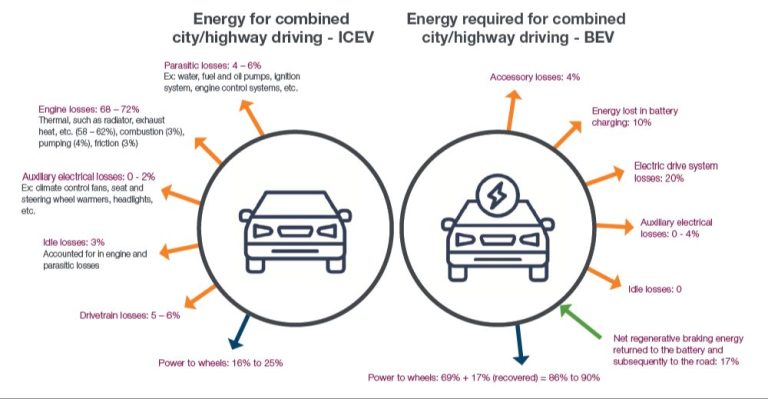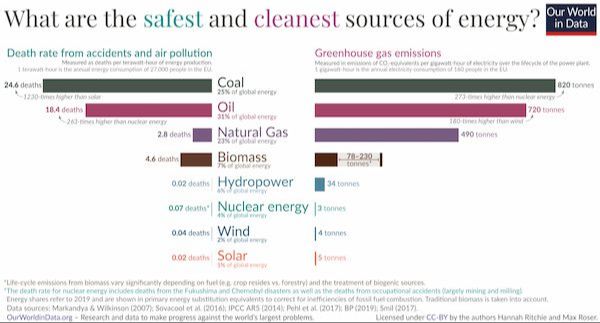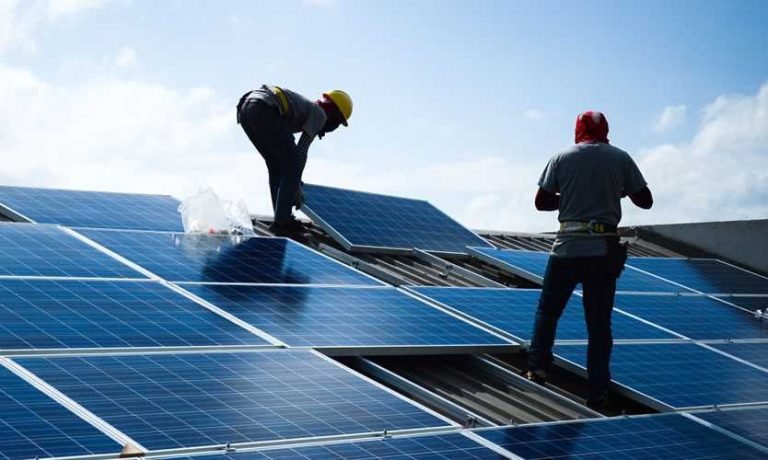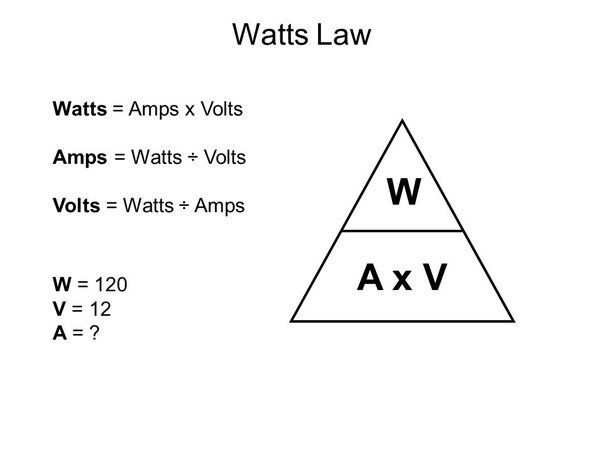Does Electricity Count As Energy?
What is Energy?
Energy is generally defined as the capacity to do work or cause change. Energy comes in many different forms that can be categorized into two main types – potential energy and kinetic energy.
Potential energy is stored energy due to the position or configuration of an object. Examples of potential energy include:
- Chemical energy stored in the bonds between atoms and molecules
- Nuclear energy from the binding forces inside an atom’s nucleus
- Gravitational potential energy from an object’s height
- Elastic potential energy stored in stretched or compressed objects
- Thermal energy from the motion of particles that make up matter
Kinetic energy is energy associated with motion. The faster or heavier an object, the more kinetic energy it possesses. Examples include:
- Radiant energy like light and heat that travels in waves
- Mechanical energy from moving objects
- Sound energy from vibrating molecules
- Electrical energy from the movement of electrons
Energy can convert between different forms but it cannot be created or destroyed. This principle is known as the law of conservation of energy.
What is Electricity?
Electricity refers to the flow of electric charge, which is generated by the forces acting on charged particles such as electrons and protons. It involves the motion of electrically charged particles and is measured in terms of voltage and current, or volts and amperes. Voltage is the amount of potential energy available to do work and current is the rate of flow of electric charge.
When voltage is applied to a conductive material like a metal wire, it allows electrons to flow through it, creating an electric current. This current can then be used to transfer energy for heat, light, motion and other applications. Electricity is essentially the energy made available by the flow of charged particles.
Electricity is a Secondary Energy Source
Electricity is considered a secondary energy source because it is produced from the conversion of primary energy sources like coal, oil, natural gas, nuclear power, wind, solar, and hydropower. Primary energy sources contain energy in their natural form which is then converted into electricity through various processes. For example, the chemical energy stored in coal is converted into thermal energy when burned, which heats water to produce steam that spins a turbine connected to a generator to produce electricity. The kinetic energy of flowing water spins hydroelectric turbines which turn generators, converting the mechanical energy into electrical energy. Solar panels convert the radiant energy from the sun directly into electrical energy through the photovoltaic effect. Wind turbines use the kinetic energy of moving air to turn blades connected to generators that produce electricity. In all these cases, a primary energy source’s natural form of energy is converted into electricity.
Unlike primary sources, electricity itself does not contain energy. Rather, it is a carrier of energy that has been produced from other sources. This is why electricity is considered a secondary source of energy. It requires the conversion of primary sources like coal, natural gas, oil, nuclear, solar, wind, or hydro power to be generated. Once produced, electricity can then be used to power homes, buildings, and machinery, or be converted into other useful forms of energy like heat, light, or motion.
Electricity as Electrical Energy
Electricity is a form of energy that involves electric charges, their motions, and the associated electric and magnetic fields. There are two main forms of electrical energy associated with electricity:
Electric potential energy results from the separation of positive and negative charges, such as protons and electrons. When these charges are separated, such as in a battery, they want to reconnect and will do so if a conductive path is provided. The potential to do work in reconnecting the charges is the electric potential energy.
Kinetic energy results from electrons moving through a conductive material like a wire. The moving electrons constitute an electric current that transfers energy. The kinetic energy of the moving electrons can be transformed into other forms of energy like heat, light, or mechanical work.
So in both cases, electricity involves storing potential energy in separated charges or harnessing the kinetic energy of moving charges. This makes electricity a form of energy in itself that can be converted to other types of energy.
Converting Electricity to Other Energy Forms
Electricity is versatile in that it can easily be converted into other common forms of energy that power our modern lives. With the right devices and systems, electricity can be readily transformed into light, heat, motion, and sound.
To create light, electricity is sent through thin wires called filaments inside lightbulbs, which heats up the filaments to incandescence, producing visible light. Electricity can also produce light more directly by exciting gases inside fluorescent tubes or activating light-emitting diodes (LEDs).
Electricity is commonly converted into heat through electrical resistance in appliances like stoves, toasters, space heaters, and hair dryers. As electricity flows through the resistive wiring in these devices, the encounters with resistance produce thermal energy in the form of heat.
Electric motors convert electrical energy into mechanical energy to provide motion. They work by creating a magnetic field from the electricity which spins a rotor attached to a shaft, creating rotational motion to power fans, pumps, tools, vehicles, and more. Speakers also change electricity into motion by running current through voice coils attached to cones, causing them to oscillate and produce sound waves.
Thus, with the proper systems and devices in place, ubiquitous and versatile electricity can readily be converted into other indispensable forms of energy to power our modern lives.
Measuring Electricity in Kilowatt-hours
Electricity usage is commonly measured and billed in kilowatt-hours (kWh). A kilowatt-hour represents the amount of electricity needed to power a device that draws 1,000 watts for one full hour. For example, a 100-watt light bulb running for 10 hours would use 1 kWh of electricity (100 watts x 10 hours = 1,000 watt-hours = 1 kWh).
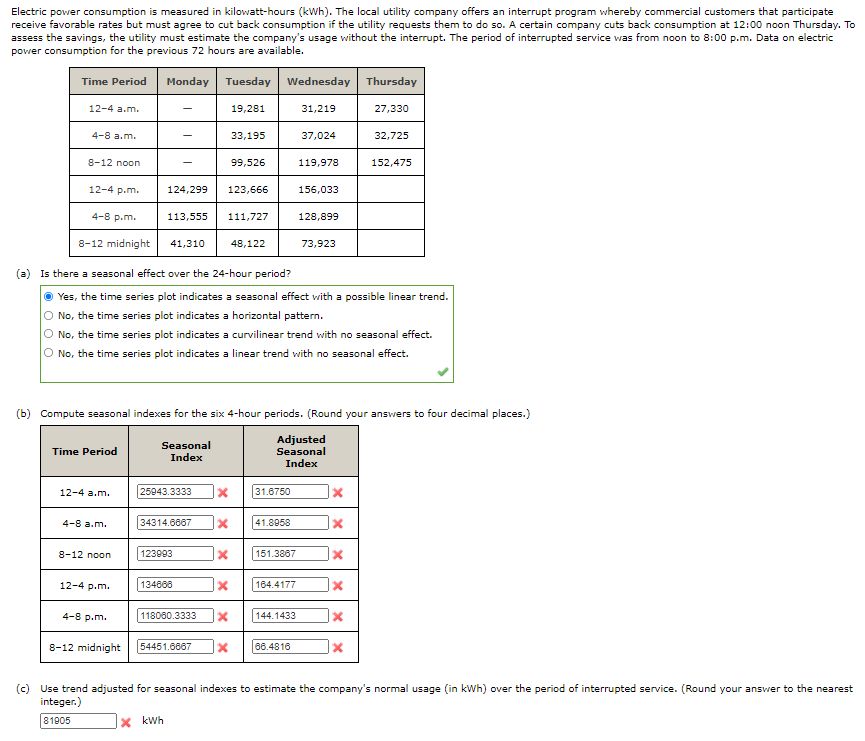
Most homes have an electricity meter that tracks the home’s energy use over time in kilowatt-hours. Electric utilities then bill customers based on the number of kWh used each month, charging a rate per kWh consumed. The more electricity a household uses, the higher the monthly bill will be. Understanding electricity billing in kWh is important for monitoring energy use and costs.
Kilowatt-hours allow easy comparisons of electricity consumption between devices and households. Knowing the kWh rating of appliances makes it possible to estimate operational costs. For example, an old refrigerator using 600 kWh per month will cost twice as much to run as an Energy Star model using 300 kWh. Kilowatt-hours also enable evaluating the cost-effectiveness of energy efficiency improvements.
Electricity and the Laws of Thermodynamics
When discussing electricity in the context of energy, it’s important to understand the laws of thermodynamics that govern energy transfers and transformations. The two primary laws are the first law of thermodynamics and the second law of thermodynamics.
The first law of thermodynamics states that energy can neither be created nor destroyed – it can only change form. This is known as the law of conservation of energy. For example, electrical energy can be converted into light and heat energy by a light bulb. The total amount of energy remains constant, but the energy transforms into different types.
The second law of thermodynamics states that in any energy transfer or transformation, the overall entropy (disorder) of the system and its surroundings always increases. Entropy is essentially a measure of how dispersed or unusable energy becomes over time. For instance, some electrical energy in a light bulb is inevitably lost as heat due to resistance in the wires and bulb filament. This heat energy dissipates into the surroundings and becomes more disordered.
In summary, the first law says that we can convert electricity into other useful forms of energy without losing any of it (just changing its form). However, the second law states that some of that useful energy will always be degraded into disordered heat energy that is not easily recoverable. These fundamental thermodynamic laws govern electricity’s relationship to energy.
Electricity Powers Daily Life
Modern society relies on electrical energy to power the technology and appliances that make our lives comfortable. From the moment we wake up to the moment we go to sleep, we depend on electricity.
In the morning, we turn on lights, charge phones, make breakfast with electric stoves and microwaves, and start the day by browsing the internet and watching TV. Electricity runs elevators, subway systems, and traffic lights that get us to work.
At the office, we use computers, printers, phones, and other electronic devices that all need power to operate. Electricity runs HVAC systems that keep buildings cool in the summer and heated in winter. It powers security systems, automatic doors, and machinery.
When we return home in the evening, we continue using electrical appliances and gadgets. We cook dinner on electric ranges, wash clothes in electric dryers, watch more TV or movies, play video games, listen to music, and more – all powered by electricity.
At night, electricity runs night lights, security alarms, and street lamps outside. Even while we sleep, electricity powers appliances like air conditioners and refrigerators that run 24/7.
Without electricity, the technological conveniences and automation we rely on for everyday life would not be possible. From essential infrastructure to entertainment, electricity powers the modern world.
Generating and Distributing Electricity
Electricity is generated at power stations and distributed through complex networks called electrical grids. Power stations convert other forms of energy, like chemical, thermal or mechanical energy, into electrical energy. Common types of power stations include:
- Fossil fuel plants that burn coal, oil or natural gas
- Nuclear power plants that use nuclear fission reactions
- Hydroelectric dams that use flowing water to spin turbines
- Wind farms with wind turbines that harness wind energy
- Solar photovoltaic arrays that convert sunlight into electricity
The generated electricity flows through transformers at the power station to increase its voltage. Higher voltage electricity can travel farther distances more efficiently through transmission lines. These transmission lines make up high-voltage electrical grids that interconnect power stations and communities across large regions. Before electricity enters homes and businesses, transformers reduce the voltage again for safe distribution and use.
Maintaining stable electrical grids involves carefully balancing electricity supply and demand. Grid operators have to match generation to load moment-by-moment. They also have to implement measures like spinning reserves and peaker plants to accommodate fluctuations in demand. The evolution of smart grids utilizes advanced communication and automation technologies to improve the efficiency and reliability of electrical grids.
Conclusion
In conclusion, electricity is considered a form of energy, but more specifically it is a secondary energy source. This means that electricity itself is not a primary fuel or power source, but rather it is generated from other primary sources of energy such as coal, natural gas, solar power, wind power, hydroelectric power, or nuclear power. Once generated, electricity becomes a highly useful carrier of energy, allowing it to be transmitted and distributed easily through power lines and cables. This allows electricity to then be converted into other useful forms of energy to power homes, buildings, and machinery. Without electricity to deliver various forms of power, modern life as we know it would not be possible.
Fundamentally, electricity serves a vital role for societies around the world. It powers industry, businesses, transportation systems, communications networks, and so much more. Many of the technological innovations and conveniences that impact our daily lives depend on reliable access to electrical power. Although electricity is not a primary fuel source, it enables primary energy to be harnessed in ways that underpin economic development, improve standards of living, and connect communities. For these reasons, electricity can unequivocally be considered a fundamental form of energy in the modern world.

